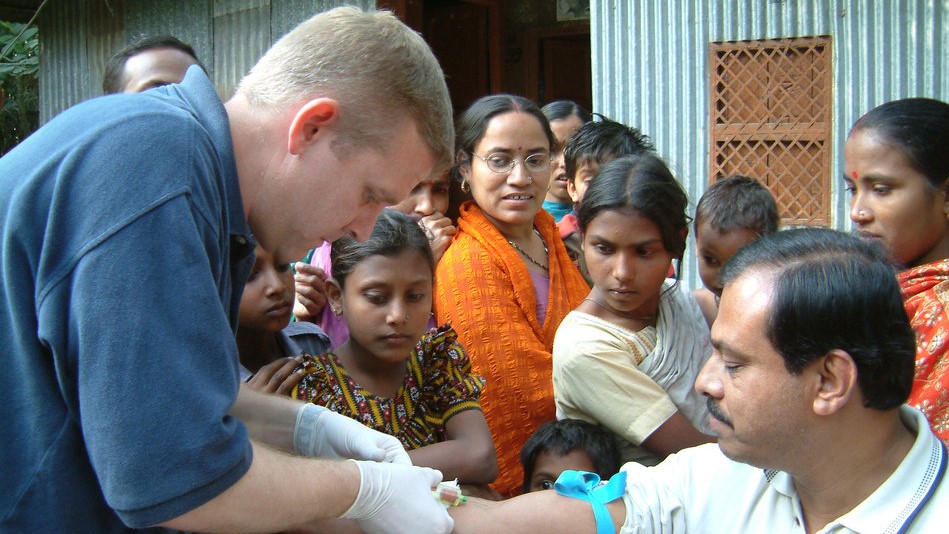
Let's talk about EIS: The Epidemic Intelligence Service
This week I participated in the 68th annual Epidemic Intelligence Service (EIS) conference in Atlanta, Georgia. While sitting in a large conference hall listening to the many EIS officers discuss fascinating epidemiology case investigations, I decided to share what I learned about the EIS program so far.
The EIS program has been around for more than 65 years. The program was established in the 1950s because the CDC wanted to establish a training program in response to the possible threat of biological warfare during the Korean War. The program quickly expanded in the following years to include other areas of investigations. In 1955, EIS officers participated in the investigation of Polio, resulting in safety control improvements, improved public confidence in the polio vaccination, and a decline in cases. In the 1960, officers participated in Smallpox eradication and the discovery of the connection between leukemia and birth defects, bringing focus to chronic disease. During the 1970s, EIS officers were on the ground in Zaire and Sudan to investigate a mysterious hemorrhagic fever...Ebola.
The list of EIS officer’s work goes on and on with involvement in almost every major public health event from HIV/AIDS in the 1980s, E.coli in the 1990s, Anthrax and SARS in the early 2000s, and more recently, Zika and HIV/Hepatitis opioid related outbreaks. EIS alumni have gone on to become CDC directors, acting surgeons general, WHO assistant directors-general and many other leadership roles in industry, foundations, nongovernmental organizations, and the news media.
EIS selection
EIS is a two-year, post-graduate fellowship in applied epidemiology. The program recruits physicians, doctoral-level scientists, veterinarians, nurses, and other healthcare professionals. The EIS officers work with public health officials to investigate and control infectious disease outbreaks, as well as respond to natural disasters and other public health threats.
EIS officers begin the two-year fellowship with a month-long orientation in Atlanta,Georgia, which begins in July. The orientation teaches new officers skills in applied epidemiology. After orientation, officers then move to their assigned placements. These placements can be at CDC headquarters in Atlanta or other locations across the United States, at state, local, or territorial health departments, or at other federal agencies.
Once selected into the EIS program the job of finding your placement begins. This occurs through two different methods: pre-match and match. For those who decide to participate in the pre-match, a list of open positions is sent out to the candidates. These are high-priority positions that need to be filled. They are considered high-priority because they may be a new EIS location which has not had previous officers or location that may be more difficult to fill. If incoming officers do not pre-match, then they participate in the match. Match occurs the following year at the annual EIS conference. Here you can speak with all the placements recruiting and rank your top six or more choices. After ranking their choices, the placements do the same and an algorithm is used to select the EIS officer for each placement.
A day in the life of an EIS officer
About 25% of EIS officers each year are assigned to state, local, or territorial health departments. These officers are referred to as “field assignees.” Field assignees, similar to those assigned to CDC headquarters, participate in and lead epidemiologic investigations, conduct surveillance, interact with the public, and produce scientific presentations and publications. However, the one major difference is that CDC headquarters assignees tend to become subject matter experts whereas field assignees tend to work more broadly in all areas and topics related to public health.
The other notable aspect of EIS is the variety of work one is able to do regardless of their education background. This week, I have heard veterinarians present on preventing violence, chronic non-communicable disease, and other non-traditional veterinarian related topics.
In conclusion, beyond the benefits of a competitive salary, EIS is one of the premier applied epidemiology training programs in the world. It hosts a community of over 3,500 alumni who have served in a range of public health issues since the start of the program. It has the nickname “Disease Detectives” for a reason...
